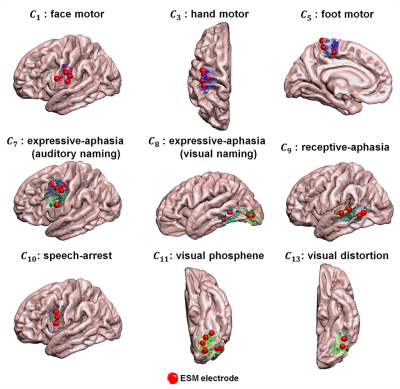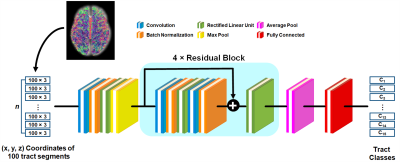Min-Hee Lee1,2, Nolan O'Hara2,3, Csaba Juhasz1,2,3,4, Eishi Asano1,3,4, and Jeong-Won Jeong1,2,3,4
1Pediatrics, Wayne State University School of Medicine, Detroit, MI, United States, 2Translational Imaging Laboratory, Children's Hospital of Michigan, Detroit, MI, United States, 3Translational Neuroscience Program, Wayne State University School of Medicine, Detroit, MI, United States, 4Neurology, Wayne State University School of Medicine, Detroit, MI, United States
1Pediatrics, Wayne State University School of Medicine, Detroit, MI, United States, 2Translational Imaging Laboratory, Children's Hospital of Michigan, Detroit, MI, United States, 3Translational Neuroscience Program, Wayne State University School of Medicine, Detroit, MI, United States, 4Neurology, Wayne State University School of Medicine, Detroit, MI, United States
DCNN-tract-classification achieved an accuracy of 98% to
non-invasively detect eloquent areas within the spatial resolution of ESM (1cm).
Kalman filter analysis found that preservation of detected areas provided no postoperative
deficits at an accuracy of 92%.

Figure
2. Examples of DCNN-determined tract
classes, Ci=1-14, spatially well-matched with ESM-determined
eloquent areas. Whole brain tractography data in validation set were classified
by the proposed DCNN tract classification and the cortical terminals of the
resulting Ci (i.e., streamline tracts presented by red-green-blue
color coding) were compared with their ground truth, ESM-determined eloquent
areas (ESM electrodes marked by red spheres).

